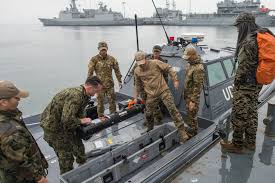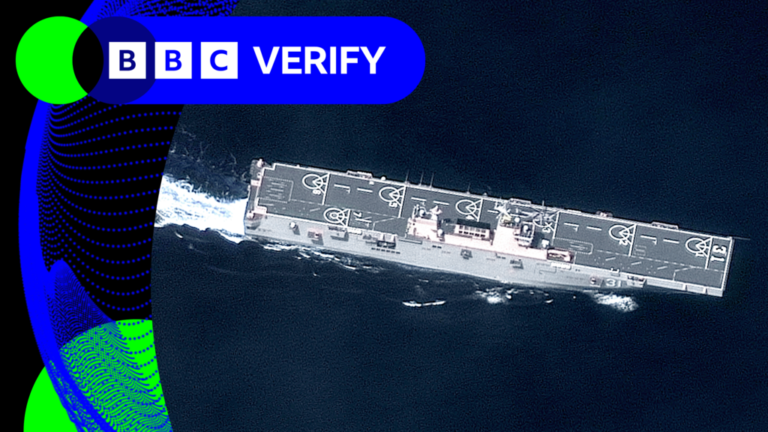
The exercise ran from April. 7-16 off the southeastern coast of the Republic of Korea. It is part of an annual series of exercises between the U.S. Navy and ROKN designed to increase proficiency in mine countermeasures operations between the two forces.
“Operating together in a combined environment is an outstanding opportunity for us to learn about how we each take on this complex mission set,” said Capt. Antonio L. Hyde, commodore, Mine Countermeasures Squadron (MCMRON) 7. “This exercise continues to show the region that the U.S. and Korean navies are committed to preserving a free and open Indo-Pacific region.”
During the 10-day exercise, U.S. Navy and ROKN units worked together to clear a route for ships through a simulated minefield using mine hunting, detection and neutralization capabilities, which included an underwater detonation of a simulated mine.
ROKN Mine Squadron 52 and MCMRON 7 commanders partnered throughout the exercise to direct mine hunting tasks for U.S. Navy and ROKN units. This training allowed U.S. and ROK Navy participants to practice communicating and operating as a bilateral team, while learning to maximize their cumulative mine hunting capability.
“Nine days of comprehensive mine warfare exercise allowed ROK-US navies to improve operational capabilities and explore future directions for mine warfare development based on lessons learned.” said Capt. Lee Taek-seon, commodore, ROK Mine Squadron 52. “We will continue to conduct practical mine warfare trainings to further strengthen our abilities to protect major ports and sea lines of communications in case of emergency.”
Warrior, personnel from Explosive Ordnance Disposal Mobile Unit (EODMU) 5, two MH-53E Helicopters from HM-15 Det 3A and staff assigned to MCMRON 7 were the U.S. Navy units that participated in Korean Spring Exercise.
ROKN participants in the exercise were two Ganngyeong-class minehunter ships, ROKS Ganggyeong (MHC-561) and ROKS Gimhwa (MHC-567); two Yangyang-class minehunter ships, ROKS Yangyang (MSH-571) and ROKS Hongseong (MSH-576); one Wonsan-class minelayer ship ROKS Wonsan (MLS-560); one Nampo-class minelayer ship (MLS-570); one Cheonghaejin-class submarine rescue ship, ROKS Cheonghaejin (ASR-21); a Chamsuri-class patrol boat; one submarine; one MH-60 helicopter and two explosive ordnance disposal companies.
The exercise took place in U.S. 7th Fleet, the U.S. Navy’s largest forward-deployed numbered fleet, which routinely interacts and operates with allies and partners in preserving a free and open Indo-Pacific region.





